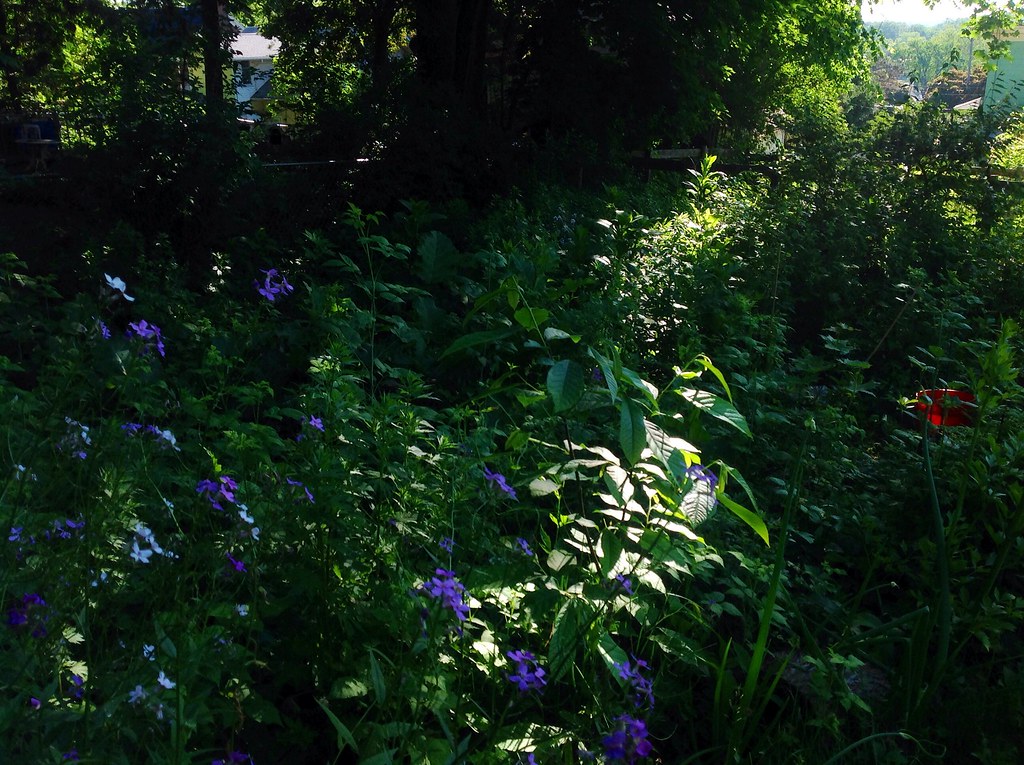This is a picture of our favorite Permaculture water storage device at Lillie House.
You just have to see the forest for the trees and there it is--A forest! Or more precisely, a forested hilltop.
Those of us in Gardening and Permaculture circles know the best place to store water isn't in rain barrels or containers, it's in the ground. A rain barrel will hold 50 gallons of water and massive sisterns can hold maybe 1,000 gallons.
A single storm in our climate can rain down THOUSANDS of gallons of water on an average roof top.
You'd need an awful lot of barrels to catch all that water.
Meanwhile, forests catch and infiltrate nearly 100% of the water that falls on them. The roots and fungi of a forest floor, topped with course woody debris, also form a great a natural irrigation system, storing and distributing water (and nutrients) to plants that need it. The water then moves slowly down-hill feeding and fertilizing the plants below, which is where we have conveniently placed our irrigation-free main crop beds, which are shaped to harvest water, and are deeply mulched and linned with fallen wood logs to harbor fungi.
At Lillie House, we've planned both of our water-intensive garden systems to be down-hill from forest areas. In our back yard, a natural old forest feeds a section of food forest with "passive swales" (debris placed on contour to slow water, accumulate silt and run-off debris and eventually form small swales without ever digging.) In turn, that food forest feeds a set of water-harvesting, deep mulched garden beds designed for "dry farming." Here, we have drought-tolerant perennial plants and self-seeding annuals as the back-bone for no-dig annual polyculture crops that taste best with a little drought. Dry weather actually concentrates the flavors of crops like tomatoes, peppers, corn, melons and squash. The combination of appropriate crops, deep mulches, thick plantings that shade the soil, well-timed planting (before rains,) protection from wind, and a rich underground resevoir of water and fertility provided by forest ecology offer up a comprehensive water strategy that mean we never have to irrigate these crops.
We didn't have a forest in our front yard, so we planted one! Again, we planned a food forest uphill of our front yard intensive crop beds, for plants we use and visit every day, like salad crops and herbs. Here's where we used a few tiny, appropriatelly-sized swales, fed by our down-spouts, to help the forest get established.
But ultimately, as these food forests establish, we can count on nature chipping in to help us water, feed and mulch these intensive beds for us.
So, while swales and elaborate earth-works can be helpful at times, it's good to remember that the best and easiest water-harvesting and storage device is the one nature herself uses, forests!





